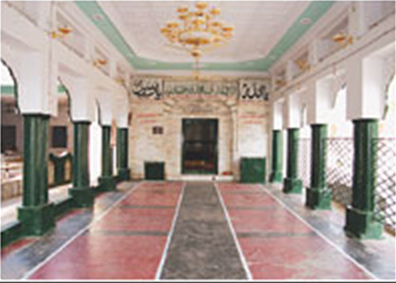Harappa/ Sahiwal
This is a collection of articles archived for the excellence of their content. Readers will be able to edit existing articles and post new articles directly |
Harappa/ Sahiwal
Primitive grandeur
Text and Photographs by Ameer Hamza
No one knows what really brought about the demise of the Indus Valley Civilization which existed circa 2500 BC. Archaeologists have differing opinions about its fate and cities one of which is Harappa.
Once a sprawling metropolis, today, a small town near Sahiwal, Harappa lures history buffs and travellers alike. Good security measures ensure that many tourists and international delegations can come here for an unforgettable experience.
Harappa has been continuously inhabited for over 4000 years, with ancient Harappans’ trade activities spreading far and wide.Their seals have been found as far as Egypt, which also testifies to the ancient trade links between the two civilisations.
Wandering through the maze of mounds that mark the archaeological site, one is awestruck by the sophistication of the building plans and construction. It has a diameter of three miles much of which remains buried. Like most ancient cities, there are layers upon layers of construction – and civilizations. Though there are signs of ongoing excavations, no archaeologist can be seen actually working at the site.
One building which looks rather odd here is the mosque built by one of the Mughal emperors. It is now covered in sand like everything else here, yet it is graceful and instantly catches the eye of all the tourists. The arches and the stunted style points to the construction style of the early Mughal period.
On the other edge of Harappa are streets crisscrossing each other at right angles. They resemble the ones at Mohenjodaro. Looking at them, it is interesting to imagine the time when these streets would have been brimming with people, rich and poor. From the construction patterns and the gravesites, archaeologists have deduced that the caste system prevalent in those primitive times was more tolerant than the indiscriminate behaviour of bigots and radical extremists of today. However, until the writings are deciphered one cannot be certain of.
The burial sites are particularly striking and give us an idea of what the ancient Harappans valued most. Jewellery like finger rings and earrings as well as urns, some really very large in size, have been found inside the graves. Many of these valuables have already been lost to invaders in the past eras and even modern day ‘tomb raiders’ have had their share of the left over grandeur. But several valuables still remain unearthed because of inconsistent excavation work due to lack of funds. These remain endangered and accessible to thieves and smugglers.
At the same time, with no proper vigilance maintained at these sites, tourists too inflict damage or marring the façade by writing on the walls.
Close to Harappa, lies a Muslim graveyard belonging to a comparatively recent era which is also worth a visit. Referred to as the ‘post-Harappa graveyard’, it has a mazaar attached to it which is said to belong to a ‘sahabi’ (friend, of Prophet Muhammad PBUH).
If one is in the mood to explore further and understand the trends and culture of the era, the local museum of Harappa is the best place to go. Though small in size, it is quite fascinating and gives another glimpse of the mysteries of the ancient civilization that once thrived in this well planned site of the twin cities at Harappa and Mohenjodaro. And surprisingly, the brilliant relics made in stone, bronze and gold may be viewed at a cost of only Rs 10 for the ticket.
